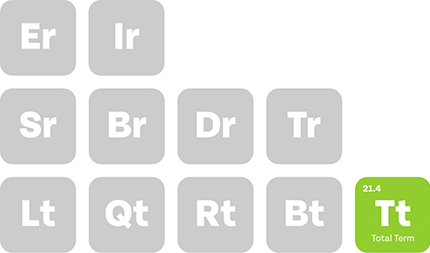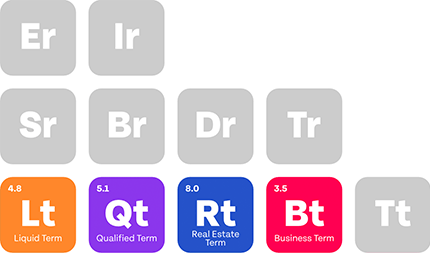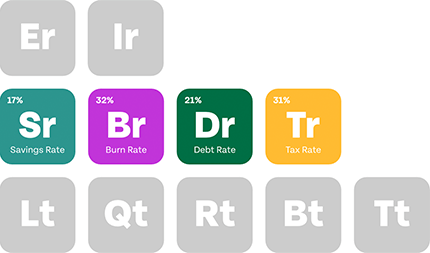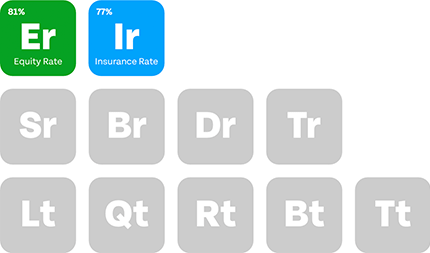If you’re considering starting a real estate career as a side gig, you might be on your way to financial freedom sooner than you think. The real estate business is a source of income that lets you use your earnings to make more money.
However, maximizing investment returns requires understanding several factors, one of which is agent fees.
The agent fee is a percentage of the price of the property you’re selling that is split between the buyer’s and seller’s brokers. However, only the home seller pays this fee.
Since this directly impacts your profit as the home seller, we’ll go over what goes on behind the scenes, including recent developments that may benefit you.
Additionally, we’ll share other factors influencing real estate returns and tips for optimizing investments.
Key Takeaways
- Real estate commissions are traditionally split between brokers, agents, buyers, and sellers.
- 2024 NAR settlement shifts buyer agent fees to homebuyers, easing sellers’ costs.
- Commission models now include flat fees, hourly rates, or tiered splits for flexibility.
- Success in real estate requires location analysis, market timing, and strategic financing.
Table of Contents
How Real Estate Commissions Work
There’s a difference between real estate agents and brokers. Brokers are licensed to operate for real estate companies independently, but agents must work under a brokerage.
When you hire a real estate agent to sell your property, you’ll pay an agent fee or real estate commission to the brokerage they represent. The commission rate is typically 6% of the home’s sales price, though you can negotiate the rate with your agent.
Note that the commission fee is split between the seller’s and the buyer’s agent. We’ll see how this works in the next section.
Behind the Scenes—Traditional Real Estate Commission Split
In a traditional real estate commission split, the gross commission is split equally between the buyer’s and the seller’s brokerage. Then each brokerage further split its cut with its respective real estate agents, based on the agreement between both parties.
Let’s break it down for better understanding.
Imagine you’re selling a property for $400,000, and the agreed commission rate with your real estate broker is 6%.
- The gross commission in this case would be: 6% of $400,000 = $24,000
- As earlier stated, the total commission is often split equally between the buyer’s and seller’s brokerages. So each brokerage gets $24,000 × .5 = $12,000
The second split is between the buyer’s brokerage with the real estate agent representing it and the seller’s brokerage with its real estate agent.
Say that the real estate agent on the seller’s side agrees on a 60/40 split with their brokerage, while the buyer’s agent splits the commission 70/30 with their brokerage.
- The seller’s agent gets $12,000 × .6 = $7200, then the broker keeps $4800
- The buyer’s agent earns $12,000 × .7 = $8400, while the brokerage gets $3600
As we have shown you, the 6% agent fee you pay is often split between four different parties. At least, that was the norm until home sellers decided to protest against the National Association of REALTORS (NAR) with multiple lawsuits.
The Impact of NAR Settlement on the Real Estate Commission Split
Before we jump into the NAR settlement, here’s a little backstory.
The traditional commission split among all involved parties worked smoothly for many years. Then, in 2019, everything changed. Several home sellers filed lawsuits against NAR, claiming that real estate fees were too high.
Some sellers also claimed ignorance of the commission split with the buyer’s side. They thought it was unfair to pay the buyer’s agent costs.
Only NAR, the governing body of real estate professionals, had the authority to bring change to the industry. NAR stood firm when sellers challenged the system, claiming no wrongdoing. However, in 2024, they settled with the home sellers. Below are key highlights of the settlement.
-
Home sellers are no longer responsible for paying the buyer’s brokerage. They are only mandated to pay the seller or listing brokerage, who then split the agent fee with the listing agent.
-
The responsibility of the buyer’s brokerage commission now falls on the home buyer. So, they must negotiate terms with the brokerage before touring or commencing any home-buying activity.
-
Although buyers are responsible for their agents, they can solicit help from the seller considering all the expenses that come with buying a home (such as down payments, closing costs, etc.).
-
The listing agent cannot list any commission split agreement on the Multiple Listing Service (MLS). The MLS is a marketplace where real estate professionals exchange information about available properties for sale. Even when the seller agrees to help with the buyer’s real estate commission fees, the listing agent is prohibited from sharing this on the MLS.
-
Brokerages now have flexibility with their commission structure. While commissions can still be based on a percentage of the sale price, brokerages are free to charge per hour, a flat fee, or whatever else works for them.
Other Real Estate Commission Split Models
The compensation structure of real estate agents/brokers doesn’t always follow the traditional commission split model. Various alternative models work for both parties, including:
1. The Office Fee Model
In this model, the real estate agent gets the total commission but pays a recurring fee (desk fee) for office space. The real estate broker may also charge a transaction fee for every deal the agent closes.
Agents in franchise brokerages must also pay franchise fees and the monthly desk fee. This adds up and eats into the agent’s commission, which in turn may affect their commission rate with the seller or buyer.
3. The Salaried Model
Some brokerages offer a salaried model that pays agents salaries instead of commissions. The agents may also enjoy the company benefits of being salary earners. This model provides income stability for agents but may offer less earning potential compared to commission-based models.
Working with a salaried agent could be more profitable as a seller because some brokerages using this model offer rebates to clients from the commissions they receive.
4. High or No Split Commission Model
A high commission split means the agent gets a larger percentage of the commission, like 80% or 85%, while no commission split means they get to keep 100%.
In this model, the brokerage makes money from sign-up, administrative, transaction, or risk reduction fees (insurance). Additional support from the brokerage will also cost the agent.
5. Graduated/Tiered Commission Model
This model is ideal for more experienced agents because their commission increases with more deals. In some brokerages, there are commission caps.
When an agent reaches that cap, they get to keep 100% of the commission from future sales within that period. However, the brokerage may charge transaction fees once the agent hits the cap.
How Real Estate Commissions Affect You as a Real Estate Investor
Whether you’re buying or selling a property, you’ll encounter real estate commission fees due to the NAR settlement. Traditionally, home sellers were responsible for covering the buyer’s agent’s commission. However, they sometimes factor the agent fee into the home’s sales price.
However, if you’re on the buying side of the investment deal, you must negotiate commission fees directly with your agent. This shift increases the cost of buying a home. On the flip side, sellers benefit from the reduced responsibility for agent fees, ultimately boosting their profit margin.
Additionally, now that brokerages can try out other compensation structures, you can work with agents that charge a flat fee or an hourly rate. This structure is particularly appealing if you’re looking for more predictable costs. This will also help with better financial planning for your investments.
Other Factors That Impact Real Estate Investment Returns
Other than real estate commission fees, other factors that affect your return on investments are the property’s location, market conditions, investment purpose, and financing costs.
Property Location
The old real estate adage “location, location, location” exists for a reason. Your property’s location determines its desirability, value, and income potential.
For instance, investment properties in areas with excellent schools, low crime rates, and access to amenities are likely to appreciate over time. They are also relatively easier to sell.
If you’re targeting rental income, properties near employment hubs or universities tend to attract reliable tenants willing to pay higher rents. However, investing in up-and-coming areas where property values are expected to rise can yield significant long-term returns.
Market Conditions
Real estate markets can shift quickly. So, understanding current market conditions is crucial for making informed investment decisions.
Are you in a buyer’s market, where supply exceeds demand, or a seller’s market, where demand outweighs supply? These dynamics can significantly affect property prices and your ability to negotiate favorable terms.
Additionally, national economic factors like interest rates, inflation, and housing inventory levels can impact the price you’ll pay for a property and its potential for appreciation over time.
Investment Purpose
Your reason for investing will shape your strategy and ultimately affect your returns. You can purchase a property to flip for a quick profit or hold it long-term as a rental.
Alternatively, you can buy and hold long-term to benefit from the property’s appreciation later.
Flipping properties typically involves higher risk and upfront costs, like renovation expenses, but can yield faster profits if the market conditions are right.
On the other hand, buying and holding properties for rental income provides a steady cash flow over time. This allows you to build equity and potentially benefit from long-term property appreciation.
Defining your investment purpose early will help you evaluate properties more effectively and choose the best financing strategies.
Financing Costs
The way you finance your investment can make or break your returns. Mortgage interest rates, loan terms, and other financing costs, such as origination fees or private mortgage insurance (PMI), will affect your bottom line.
For example, a lower interest rate can save you thousands of dollars over the life of the loan and increase your profit margins. Additionally, understanding the benefits of different loan types—such as fixed-rate versus adjustable-rate mortgages—can help you align financing with your investment goals.
If you’re planning to hold onto a property long-term, locking in a fixed rate might be your best option for predictability. But a short-term flip might benefit from an adjustable-rate mortgage with lower initial payments.
How to Optimize Real Estate Investments
Some practical tips to help you maximize returns on your real estate investment include:
1. Hire Experienced Real Estate Professionals
Work with an experienced real estate agent or broker that understands your goals. Seek brokerages that have experience working with physician investors. They can give tailored advice to help you make better decisions and save time.
2. Leverage More Passive Income Opportunities
Real estate investments don’t stop at buying and selling properties. You can explore other options like real estate investment trusts (REITs), real estate company stocks, crowdfunding projects, and mortgage bonds. These alternatives are ideal for busy physicians with little time for active property and tenant management.
3. Diversify Your Portfolio
Avoid putting all your resources into a single property or location to spread risks. Diversify across different property types (residential, commercial, or vacation rentals) and regions.
4. Understand Tax Benefits
One of the advantages of real estate investments is the tax benefits. Investors may be eligible for tax write-offs, depreciation deductions, and others. Consult with a tax advisor familiar with real estate to maximize benefits.
5. Work with Financial Advisors
Finally, consult financial advisors to determine if real estate investment is a good option for your current financial situation. They can create a personalized strategy that aligns with your goals and risk tolerance.
Final Thoughts
Real estate investments can be a lucrative way for physicians to diversify income streams, build wealth, and secure financial freedom. However, success in this field requires careful planning and an understanding of market dynamics.
Now that you understand how the commission split works and how it ultimately affects your investments, you can make informed decisions. At Physicians Thrive, we also provide other resources to help you navigate the real estate industry easily.
Before taking the final leap to invest, consult us to ensure it’s the right move for your financial health. Contact us now.







































